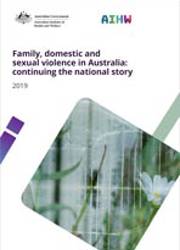Australian Longitudinal Study on Women’s Health (ALSWH)
First Year: 1996
Latest Year: 2017
Frequency: 6 months to 3 yearly, depending on cohort
Years in this publication: 1996–2017
Sample size: At baseline: 1989–95 birth cohort N = 17,015, 1973–78 birth cohort N = 14,247, 1946–51 birth cohort N = 13,714, 1921–26 birth cohort N = 12,432.
Note: sample size reduces over time.
Methodology: Longitudinal survey
Geography: National
Purpose/description
The purpose of the project is to provide scientifically valid information, based on current, accurate data that is relevant to the development of health policy and practice in women’s health.
Scope and coverage
In April 1996, women in three age groups–18–23 years (born 1973–78), 45–50 years (born 1946–51), and 70–75 years (born 1921–26)–were randomly sampled from the Medicare database, which contains the name and address details of all Australian citizens and permanent residents. To allow for statistically valid comparisons, women from rural and remote areas were oversampled. In 2011, the older cohort began receiving a shortened survey every six months, and in 2012 ALSWH began annual surveys of a new cohort of young women, born 1989–95. Data from 2013–2017 of the new cohort are available.
FDSV definitions
Domestic violence was measured slightly differently according to the cohort but all four cohorts were asked ‘Have you ever been in a violent relationship with a partner/spouse?’ This question was asked at every survey for women born 1973–78, at Surveys 1, 4, 5 and 6 for women born 1946–51, but was only asked at Survey 1 for women born 1921–26. This variable was used to classify domestic violence.
Women born 1973–78 and 1946–51 were defined into one of three categories:
- if they self-reported ‘yes’ to the domestic violence question at Survey 1, then they were classified as ‘Domestic violence by 1996’
- if they answered ‘no’ at Survey 1 but answered ‘yes’ at any following survey, then they were classified as ‘Domestic violence after 1996’
- if they self‑reported ‘no’ at Survey 1 and had not answered ‘yes’ in any subsequent survey, then they were classified as ‘Never domestic violence’.
Women born 1921–26 were only asked the domestic violence question at Survey 1 and were therefore defined into one of two categories:
- if they self-reported ‘yes’, then they were classified as ‘Domestic violence by 1996’
- if they self-reported ‘no’, then they were classified as ‘Never domestic violence’.
Details of abuse experienced in childhood has been collected from the three youngest cohorts using the Adverse Childhood Experienced Scale.
Behavioural measures of domestic violence have been included in the 1973–78 and 1989–95 cohort surveys. The Community Composite Abuse Scale has been completed by the 1973–78 cohort since Survey 4, and every survey of the 1989–95 cohort has included the abbreviated version of this scale.
All women have been asked about sexual violence on a regular basis.
Other items have asked about bullying, non-partner violence and vulnerability to elder abuse.
More details on measuring domestic violence in longitudinal research.
For more information, visit the Australian Longitudinal Study on Women’s Health.



